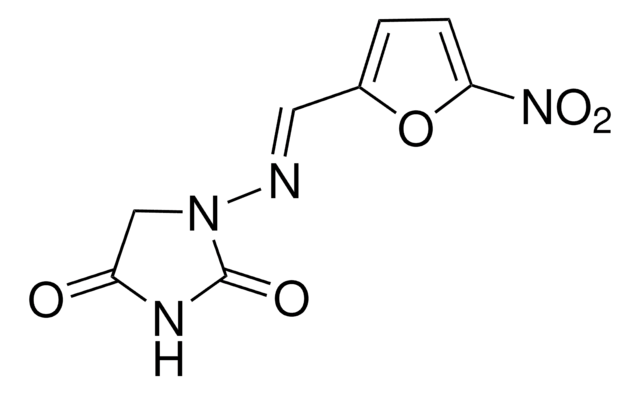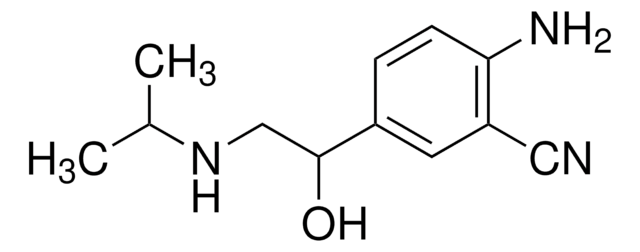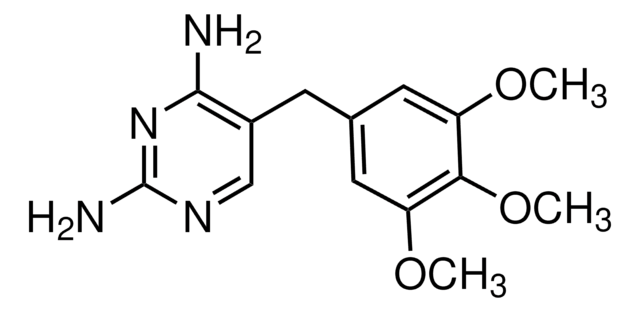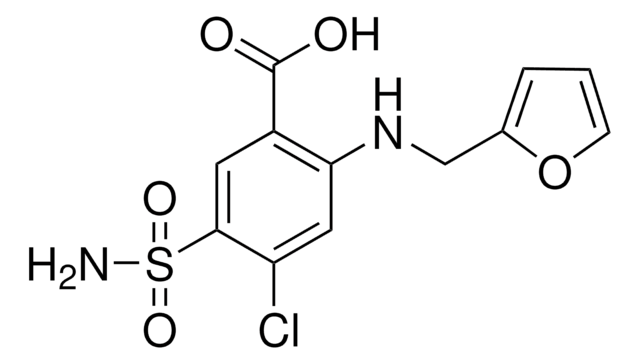PHR1191
Nitrofurantoin
Pharmaceutical Secondary Standard; Certified Reference Material
Synonym(s):
N-(5-Nitro-2-furfurylidene)-1-aminohydantoin, Furadoxyl, Nitrofurantoine
About This Item
Recommended Products
grade
certified reference material
pharmaceutical secondary standard
Quality Level
Agency
traceable to USP 1464001
API family
nitrofurantoin
CofA
current certificate can be downloaded
technique(s)
HPLC: suitable
gas chromatography (GC): suitable
application(s)
cleaning products
cosmetics
food and beverages
personal care
pharmaceutical (small molecule)
format
neat
storage temp.
2-30°C
SMILES string
[O-][N+](=O)c1ccc(\C=N\N2CC(=O)NC2=O)o1
InChI
1S/C8H6N4O5/c13-6-4-11(8(14)10-6)9-3-5-1-2-7(17-5)12(15)16/h1-3H,4H2,(H,10,13,14)/b9-3+
InChI key
NXFQHRVNIOXGAQ-YCRREMRBSA-N
Looking for similar products? Visit Product Comparison Guide
General description
Nitrofurantoin, a synthetic, nitrofuran-derivative, is a widely used urinary antimicrobial compound that is effective against pulmonary fibrosis, neuropathy, hepatitis and hemolytic anemia.
Application
Analysis Note
Other Notes
Footnote
related product
Signal Word
Danger
Hazard Statements
Precautionary Statements
Hazard Classifications
Acute Tox. 4 Oral - Resp. Sens. 1 - Skin Sens. 1
Storage Class Code
11 - Combustible Solids
WGK
WGK 1
Flash Point(F)
Not applicable
Flash Point(C)
Not applicable
Choose from one of the most recent versions:
Certificates of Analysis (COA)
Don't see the Right Version?
If you require a particular version, you can look up a specific certificate by the Lot or Batch number.
Already Own This Product?
Find documentation for the products that you have recently purchased in the Document Library.
Customers Also Viewed
Our team of scientists has experience in all areas of research including Life Science, Material Science, Chemical Synthesis, Chromatography, Analytical and many others.
Contact Technical Service












